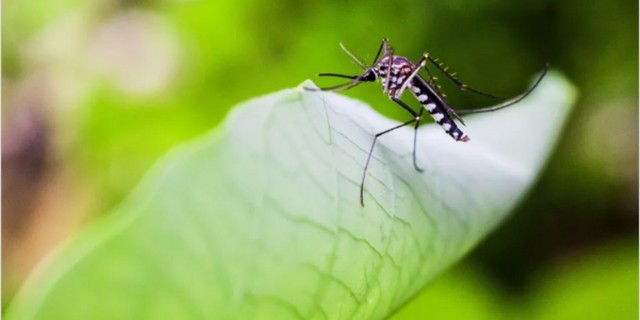80-year mystery solved: Mosquitoes spread flesh-eating Buruli ulcer
In a major breakthrough, Professor Tim Stinear (Dept of Microbiology & Immunology at the Doherty Institute) and research team have solved the 80-year mystery surrounding the spread of Buruli ulcer, a neglected tropical skin disease which has become an important public health issue in Victoria, Australia.

Published in Nature Microbiology, their findings categorically confirm mosquitoes as the primary vectors transmitting the ulcer-causing bacteria Mycobacterium ulcerans (M. ulcerans) from the environment to people.
How people contract Buruli ulcer has been a central question that has perplexed scientists since the discovery of M. ulcerans in the 1940s in Australia. With an alarming and inexplicable surge in cases in and around Melbourne and Geelong, this discovery represents a pivotal and significant advancement in the efforts to curb the spread of Buruli ulcer and protect communities.
Focusing on the Mornington Peninsula, a seaside region outside of Melbourne with one of the highest incidences of Buruli ulcer in the world, the Beating Buruli in Victoria project team trapped and tested more than 65,000 mosquitoes between 2016 and 2021.
The collaborative research team brings together partners from the Bio21 Institute, Agriculture Victoria, Austin Health, Victorian Department of Health, the Mornington Peninsular Shire, CSIRO, and more.
“How Buruli ulcer is spread to people has baffled scientists and public health experts for decades,” said Professor Tim Stinear, Head of Bacterial Pathogenomics Lab and Director of WHO Collaborating Centre for Mycobacterium ulcerans.
“So now that mystery is solved with our five-year study revealing that mosquitoes transmit M. ulcerans in southeastern Australia, making mosquito bite prevention and mosquito control obvious forms of prevention.”
Minister for Health Mary-Anne Thomas highlighted the importance of the Beating Buruli project.
“We are proud to support the Beating Buruli project, this research will help us better understand how the infection is transmitted and determine ways to prevent infection to protect the health of Victorians,” said Minister Thomas.
Over the last two decades, there has been an exponential increase in reported cases in Victoria, Australia, escalating from 12 in 2003 to 363 in 2023 – the highest count to date.
The Beating Buruli in Victoria team is in the process of rolling out a new trial aimed at reducing mosquito populations in urban areas, specifically around Brunswick West, Pascoe Vale South, Moonee Ponds and Essendon in Victoria, using state-of-the-art, environmentally friendly mosquito traps.
Video: Professor Tim Stinear provides us with advice on how to stop the spread of Buruli ulcer with tips to protect yourself and your loved ones from mosquitoes this Summer.
This article was originally published on 24 Jan 2024 by the Peter Doherty Institute for Infection & Immunity (Doherty Institute).
The Doherty Institute is a joint venture between The University of Melbourne and The Royal Melbourne Hospital.